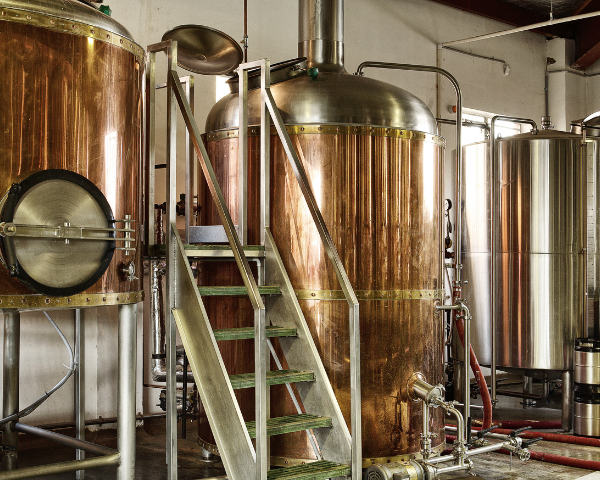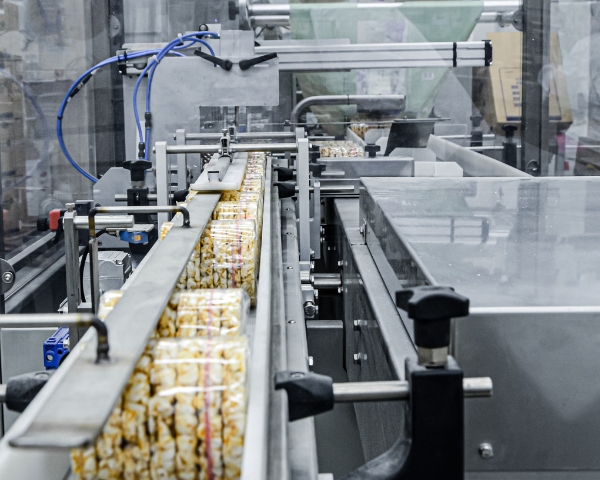This project wrapped up in 2024. Medford Water very slightly increased the pH of the treated water from both of our sources in order to improve the longevity of our system and further enhance water quality, helping us to continue delivering the highest quality drinking water to your homes and businesses.
This project wrapped up in 2024.
Our award-winning water is now even better!
Starting in 2024, Medford Water began increasing the pH of the treated water from both of our sources in order to improve the longevity of our system and further enhance the water quality at customer’s taps, by limiting the potential release of metals from plumbing and distribution system water mains, helping us to continue delivering the highest quality drinking water to your homes and businesses.
Background and Benefits
Medford Water’s top priority is providing drinking water of the highest quality to our customers, and as part of our commitment to the pursuit of excellence and being the Rogue Valley’s trusted municipal water provider for present and future generations, in 2019, we completed a Water Quality and Corrosion Study. While we meet and surpass all applicable federal and state drinking water standards, the study concluded that increasing the pH at both treatment facilities (using sodium hydroxide) would further enhance our award-winning water all the way to customer’s taps by limiting the potential release of copper, lead, and iron from household plumbing, and improve the longevity of our system.
What to Know
- Previously, the pH of water entering our drinking water system from Big Butte Springs was approximately 7.0, and 7.3 for the water entering from the Rogue River. The first step of this small pH change began in January 2024, using sodium hydroxide, and eventually brought both water sources to approximately 7.8.
- The change in the pH of the water will help protect customers who have plumbing in their homes that are made of or have metal components (such as copper, lead, and iron), as well as improve the longevity of our water distribution system.
- The taste and smell of our award-winning water are not impacted. The only difference you should notice is a minor increase to the alkalinity of the water. This may result in a small increase in the amount of “scaling” on equipment/appliances—the white, naturally- occurring mineral that can be seen after water has dried. In particular, customers may notice a small amount of additional scale develop over time where hot water is in contact with fixtures and appliances, such as hot water heaters, dishwashers, and showerheads. Follow the manufacturer’s directions for care and maintenance of these appliances.
- Sodium hydroxide is used at thousands of drinking water plants across the nation to make pH adjustments. When dissolved in water, it breaks down into sodium (found in table salt and hydroxide ions (found in all water). In addition to being used in water treatment, it is found in many everyday beauty products and used in food preparation.)
- No action is required for most customers, except those utilize processes that are known to be pH dependent, such as medical facilities/equipment users, aquarium and pond owners, breweries or individuals who brew beer at home, and food processing customers.
See the following information for these groups:
What is pH?
pH is a measure of the concentration of hydrogen ions in the water, which indicates how acidic or basic water is. The pH of drinking water depends on the water source, treatment methods, and other factors, but generally lies within the range of 6.5-8.5. This change will bring our water from 7.0-7.3, depending upon the source, to a target of approximately 7.8
Want to know what’s in the water we drink?
View our Consumer Confidence Report, which focuses on and provides details about compliance with regulations. For a comprehensive listing of testing results, see our Water Quality Analyses.
For more information on pH, our source water, and this change, please see our FAQs on the Project Documents tab.
Medford Water Customer Service

The first step of this project was to implement the pH increase first at Big Butte Springs in January 2024, and then in the water from the Rogue River in the spring when the Robert A. Duff Water Treatment Plant came online to keep up with seasonal demand. The adjustment of the pH of both water sources is now complete, improving the longevity of our system and further enhancing water quality all the way to customer’s taps.
What is pH?

The letters ‘pH’ stand for potential of hydrogen, and pH is a measure of the concentration of hydrogen ions in the water, which indicates how acidic or basic a solution is. The pH range goes from 0 to 14; see Figure 1.0 on page 4 for an illustration of this scale. Values less than 7 indicate acidity, and values greater than 7 indicate basicity/alkalinity. Examples of acidic liquids include stomach fluid (pH between 1 to 3.5), lemon juice (pH of 2.4), and vinegar (pH of 2.8). An example of a basic liquid is bleach (pH of 13.5). The pH of drinking water depends on the water source, treatment methods, and other factors, but generally lies within the range of 6.5-8.5.
Why is MW increasing the pH?

In 2019, we completed a Water Quality and Corrosion Study as part of our commitment to ensuring that our customers continue to receive the highest quality water. While we meet and surpass all applicable federal and state drinking water standards, the study concluded that increasing the pH of both of our sources would further enhance the water quality at customer’s taps by limiting the potential release of metals (such as copper, lead, and iron) from both customer’s private plumbing, and our distribution system watermains, improving the longevity of our system and allowing us to continue to serve our customers for years to come.
How much will the pH change?

Currently, the pH of water entering our drinking water system from Big Butte Springs is approximately 7.0, and 7.3 for the water entering from the Rogue River. This small increase in pH, using sodium hydroxide, will eventually bring both sources to a target of approximately 7.8. This number is well within the common drinking water pH range of 6.5-8.5.
When will this change take place, and will I notice the difference?

MW will implement the pH increase first at Big Butte Springs in January 2024, and plans to increase pH in the water from the Rogue River in the spring. Our award-winning water will not taste or smell any different due to this small increase in pH, though it is predicted to result in a minor increase to the alkalinity of the water.
This may result in a small increase in the amount of “scaling” on equipment/appliances—the white, naturally-occurring mineral that can be seen after water has dried (see photo at right). In particular, customers may notice a small amount of additional scale develop over time where hot water is in contact with fixtures and appliances, such as hot water heaters, dishwashers, and showerheads. Follow the manufacturers’ directions for care and maintenance of these appliances.
In addition, the change will not result in any measurable impact to hair or nails; pool/hot tub owners should continue with their regular water testing schedule, and garden owners with their soil testing.
Is pH the same as hardness?

While they are linked, pH is different than hardness, which is the measure of the mineral content of the water, typically measured by dissolved calcium carbonate (CaCO3). The harder the water, the less easily soap will lather. Typically ranging between 25 and 40 ppm, our water tends to be moderately soft, and this will not change. Hardness is also sometimes given in grains per gallon, with our water generally having between 1.4 and 2.4 grains per gallon.
Are there any individuals that should pay special attention to the change?

Medical facilities/equipment users
As noted above, a minor increase in scaling on equipment may occur due to the alkalinity of the water slightly increasing as a result of the pH increase. If you have specific concerns about how the increase in pH may affect the operations and/or maintenance procedure of your business or equipment, consult the manufacturer or operator of the equipment. Customers can contact the Oregon Health Authority for more information on how changes in pH may affect medical operations. There is no risk expected to dialysis patients, and the pH increase will not affect in-center or home dialysis treatment operations.
Aquarium and pond owners
While the increase in pH will not change the pH from being at a safe drinking water level for humans and most pets (and within the US EPA’s range of 6.5-
8.5 for secondary contaminants), more sensitive organisms such as fresh water and salt-water aquatic life are more susceptible to impacts from changes in pH. It is recommended that aquarium and pond owners regularly test the pH of the water in the fish tank and also to test and adjust the water if needed prior to adding it to the tank to ensure it remains within the safe range specific to the species/type of organisms present.
Breweries/individuals who brew beer at home
An increase of pH of the water used in brewing operations can affect the process of crafting beer or spirits. Homebrewers should ask their local homebrew shop for suggestions on appropriate products to reduce pH; breweries and distilleries typically have their own procedures for testing and adjusting water used in their operations and should continue to follow those procedures.
Food processing customers
Similar to brewing, some food processing methods require specific pH conditions. If your business or facility contains processes that are known to be pH dependent, it is recommended that procedures for testing and adjusting water are implemented if not already in place.
Why is sodium hydroxide the best choice to adjust the pH?

Sodium hydroxide is used at thousands of drinking water plants across the nation to make pH adjustments. When dissolved in water, it breaks down into sodium ions (found in table salt, but don’t worry, it won’t make the water salty!) and hydroxide ions (found in all water). In addition to being used in water treatment, it is used in many everyday beauty products and in food preparation to make ingredients less harsh (overly acidic formulas with a very low pH can be extremely harsh on the skin).
Sodium hydroxide was selected due to the chemistry of Medford Water’s raw source water (Big Butte Springs and the Rogue River), as well as conditions within some customer’s private plumbing and in the distribution system. The addition of sodium hydroxide prior to transmission through distribution pipes will adjust the pH to a level that reduces this leaching capability of the water. As a corrosion inhibitor, sodium hydroxide is the best choice to make this change.
Will I be able to taste or smell sodium hydroxide in my tap water?

No. There will not be a difference in the taste or smell of your tap water.
Will the addition of sodium hydroxide in my drinking water have an adverse effect on my personal filter that I have installed?

No. However, for all privately purchased water filtration systems, it is recommended to always refer to the manufacturer’s instructions.
Where does our water come from?

During the winter months, our drinking water comes from Big Butte Springs, a ground water source that provides water of exceptional quality. During the peak-use summer months, water from the Rogue River is used to supplement the springs supply. The river water is also of high quality, but additional treatment—performed at the Robert A. Duff Water Treatment Plant—is required. Treatment of this surface water source consists of coagulation, settling, and filtration, followed by disinfection. The addition of ozone in 2002 provided a dramatic reduction in musty taste and odors occasionally found in the river water. While it does provide additional disinfection benefits, it was added only for these aesthetic qualities; the overall water quality is excellent and safe to drink.
Where can I find out what is in my drinking water?

View our Consumer Confidence Report, which focuses on and provides details about compliance with regulations. For a comprehensive listing of water testing results, see our Water Quality Analyses.
Does our water have lead in it?

There is virtually no lead or copper in either of Medford Water’s supply sources. However, since these metals can enter the drinking water supply through corrosion within the water distribution system or household plumbing, supplemental testing is conducted at the individual taps of customers whose plumbing meets criteria for being at risk for elevated lead and copper levels, as part of our Lead and Copper Monitoring Program.
What is corrosivity?

Corrosivity describes the quality of eroding or eating away, such as water eroding pipes and fixtures. Corrosive water can cause lead and copper in pipes to leach into drinking water and can eventually cause leaks in plumbing. Surface water and groundwater, both sources of drinking water, can potentially be corrosive, depending upon the chemistry of the water.
What is a mineral?

A mineral is a naturally occurring inorganic solid with a definite chemical composition and a crystalline structure.
Where can I find more information about pH in drinking water?

Environmental Protection Agency:
https://www.epa.gov/sdwa/drinking-water-regulations-and-contaminants
World Health Organization:
https://cdn.who.int/media/docs/default-source/wash-documents/wash-chemicals/ph.pdf?sfvrsn=16b106564
Medford Water pH webpage:
http://www.medfordwater.org/pH
Who can I call if I have questions or concerns about water quality?

For information about water quality, call 541-774-2430. Questions also can be emailed to customerservice@medfordwater.org. The EPA’s Safe Drinking Water Hotline is 1-800-426-4791.
| Date | Update |
|---|---|
| June 2024 | The adjustment of the pH of both water sources is complete, improving the longevity of our system and further enhancing water quality all the way to customer’s taps. |
| May 2024 | The next step of this project will bring the pH of the water from Big Butte Springs and the Rogue River from approximately 7.3 to 7.8 when our Robert A. Duff Water Treatment Plant begins treating water to keep up with seasonal demand. This small change will not impact the taste of the water we provide, nor the hardness; it is predicted to have a minor increase in alkalinity. |
| February 2024 | The project is set to kick off on February 27, 2024, beginning with our Big Butte Springs source. The first step of this small change brought the pH of water from Big Butte Springs from approximately 7.0 to 7.3. The change for our Rogue River source, used primarily in peak-use months, will occur when our Robert A. Duff Water Treatment Plant is commissioned for the season in the spring. |
| December 2023 | An FAQ document has been posted. |





